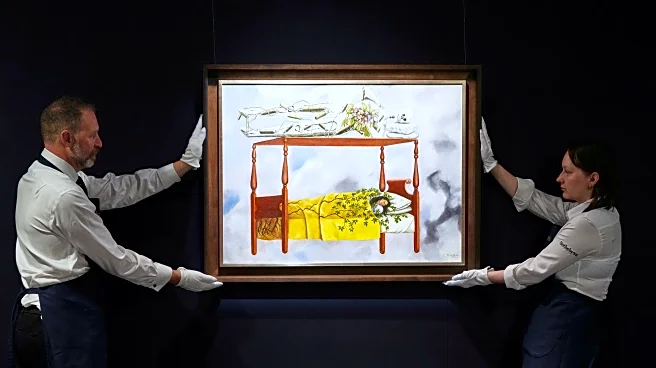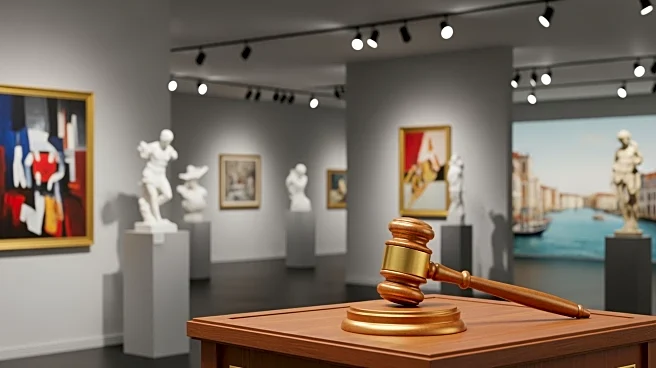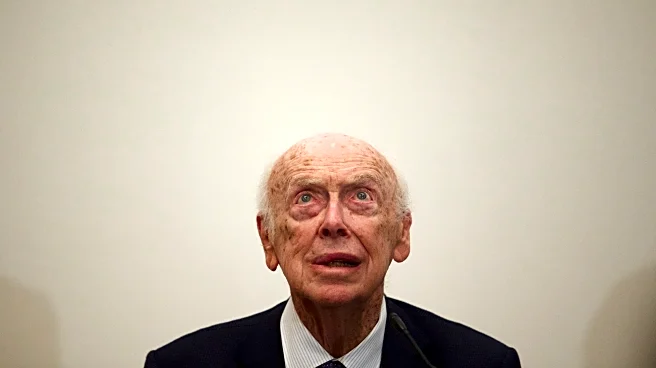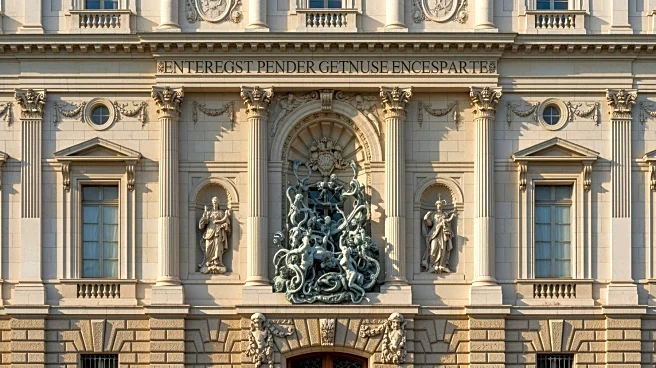MEXICO CITY (AP) — Frida Kahlo’s “El sueño (La cama)” — in English, “The Dream (The Bed)” — is causing a stir among art historians as its estimated $40 million to $60 million price tag would make it the
most expensive work by any female or Latin American artist when it goes to auction later this month.
Sotheby’s auction house will put the painting up for sale on Nov. 20 in New York after exhibiting it in London, Abu Dhabi, Hong Kong and Paris.
“This is a moment of a lot of speculation,” said Mexican art historian Helena Chávez Mac Gregor, a researcher at UNAM’s Institute of Aesthetic Research and author of “El listón y la bomba. El arte de Frida Kahlo (The Ribbon and the Bomb. The Art of Frida Kahlo)."
In Mexico, Kahlo’s work is protected by a declaration of artistic monument, meaning pieces within the country cannot be sold or destroyed. However, works from private collections abroad — like the painting in question, whose owner remains unrevealed — are legally eligible for international sale.
“The system of declaring Mexican modern artistic heritage is very anomalous,” said Mexican curator Cuauhtémoc Medina, an art historian and specialist in contemporary art.
“El sueño (La cama)” was created in 1940 following Kahlo's trip to Paris, where she came into contact with the surrealists.
Contrary to contemporary belief, the skull on the bed’s canopy is not a Day of the Dead skeleton, but a Judas — a handmade cardboard figure. Traditionally lit with gunpowder during Easter, this effigy symbolizes purification and the triumph of good over evil, representing Judas Iscariot who betrayed Jesus.
In the painting, the skeleton is detailed with firecrackers, flowers on its ribs and a smiling grimace — a detail inspired by a cardboard skeleton Kahlo actually kept in the canopy of her own bed.
Kahlo “spent a lot of time in bed waiting for death,” said Chávez Mac Gregor. “She had a very complex life because of all the illnesses and physical challenges with which she lived.”
Although Kahlo’s painting is being auctioned alongside works by surrealists like Salvador Dalí, René Magritte, Max Ernst and Dorothea Tanning, she did not consider herself a member of the movement, despite having met its founder, André Breton, in Mexico and had an exhibition organized by him in Paris in 1939.
“Breton was fascinated by Frida’s work, because he saw that surrealist spirit there,” said Chávez Mac Gregor.
Kahlo, a committed communist, considered surrealism — a movement proposing a revolution of consciousness — to be bourgeois. As Chávez Mac Gregor noted, “Frida always had a critical distance from that.”
Despite this, specialists have found elements of surrealism in Kahlo’s work related to the dreamlike, to an inner world and to a revolutionary and sexual freedom — a concept visible in a bed suspended in the sky with Kahlo sleeping among a vine.
“El sueño (La cama)” was last exhibited in the 1990s, and after the auction, it could disappear from public view once again, a fate shared by many paintings acquired for large sums at auction.
There are exceptions, including “Diego y yo” ( “Diego and I”), which set Kahlo’s record sale price when it sold for $34.9 million in 2021.
The painting, depicting the artist and her husband muralist Diego Rivera, was acquired by Argentine business owner Eduardo Costantini and then lent to the Museum of Latin American Art of Buenos Aires (Malba) where it remains on exhibit.
Medina, the art historian, regretted that the “crazy-priced” purchases have reduced art to a mere economic value.
He lamented that when funds purchase art as mere investments — like buying shares in a public company — the works are often relegated to tax-free zones to avoid costs. Their fate, he said, “may be worse; they may end up in a refrigerator at Frankfurt airport for decades to come.”
The current sale record for a work by a female artist is held by Georgia O’Keeffe’s “Jimson Weed/White Flower No. 1,” which fetched $44.4 million at Sotheby’s in 2014.
However, the auction market still reflects a profound disparity as no female artist has yet exceeded the maximum sale price of a male artist. The current benchmark is “Salvator Mundi,” attributed to Leonardo da Vinci, which was auctioned by Christie’s for $450.3 million in 2017.














